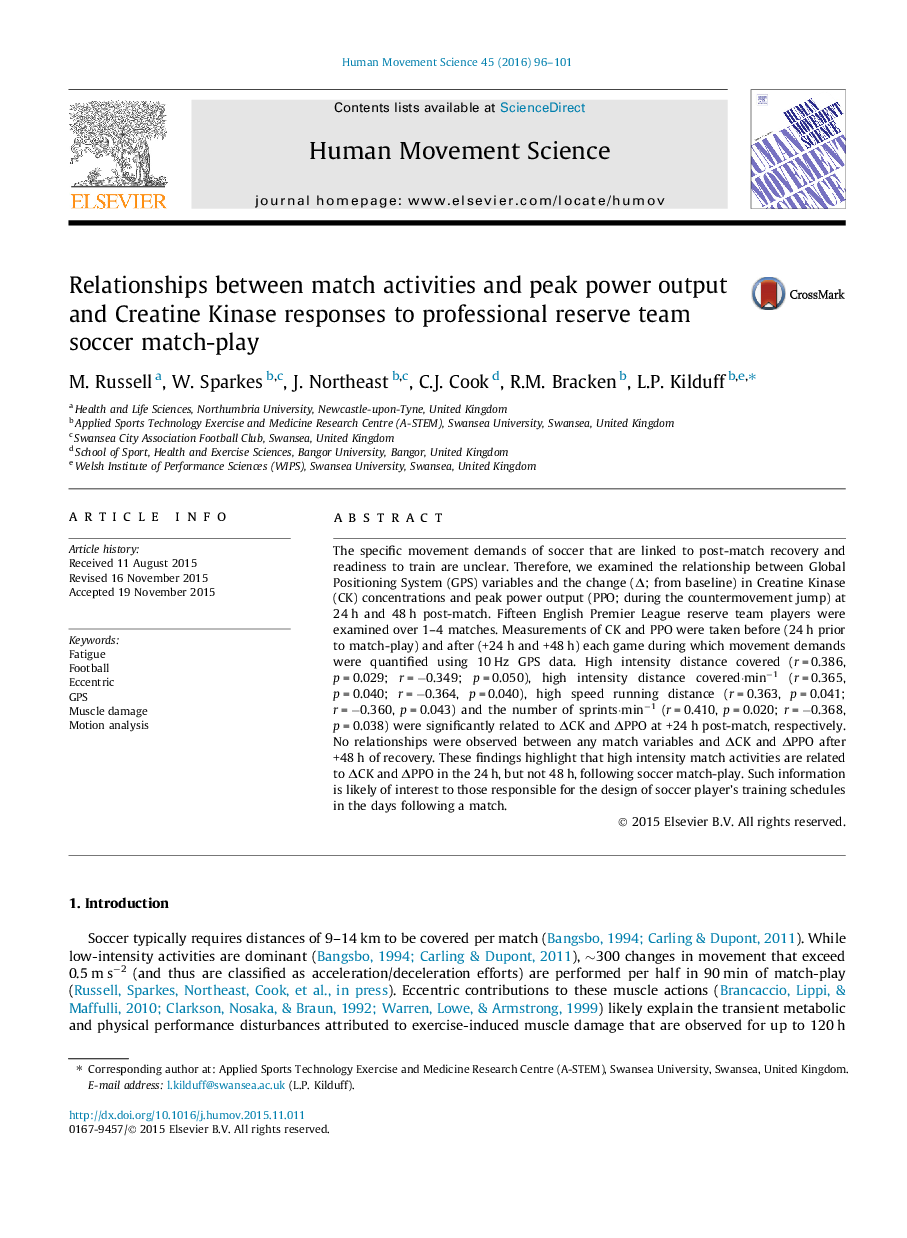| Article ID | Journal | Published Year | Pages | File Type |
|---|---|---|---|---|
| 7291623 | Human Movement Science | 2016 | 6 Pages |
Abstract
The specific movement demands of soccer that are linked to post-match recovery and readiness to train are unclear. Therefore, we examined the relationship between Global Positioning System (GPS) variables and the change (Î; from baseline) in Creatine Kinase (CK) concentrations and peak power output (PPO; during the countermovement jump) at 24 h and 48 h post-match. Fifteen English Premier League reserve team players were examined over 1-4 matches. Measurements of CK and PPO were taken before (24 h prior to match-play) and after (+24 h and +48 h) each game during which movement demands were quantified using 10 Hz GPS data. High intensity distance covered (r = 0.386, p = 0.029; r = â0.349; p = 0.050), high intensity distance coveredâ
minâ1 (r = 0.365, p = 0.040; r = â0.364, p = 0.040), high speed running distance (r = 0.363, p = 0.041; r = â0.360, p = 0.043) and the number of sprintsâ
minâ1 (r = 0.410, p = 0.020; r = â0.368, p = 0.038) were significantly related to ÎCK and ÎPPO at +24 h post-match, respectively. No relationships were observed between any match variables and ÎCK and ÎPPO after +48 h of recovery. These findings highlight that high intensity match activities are related to ÎCK and ÎPPO in the 24 h, but not 48 h, following soccer match-play. Such information is likely of interest to those responsible for the design of soccer player's training schedules in the days following a match.
Related Topics
Life Sciences
Neuroscience
Cognitive Neuroscience
Authors
M. Russell, W. Sparkes, J. Northeast, C.J. Cook, R.M. Bracken, L.P. Kilduff,
